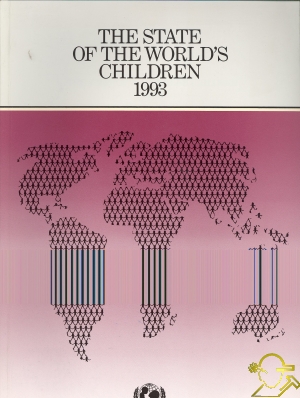The State Of The World's Children 1993
İÇİNDEKİLERSTATISTICAL NOTEIn this report, the total annual number of child deaths in the developing world is given as 12.9 million. In previous years, the figure of 14 million has been used. This note gives the background to this change. The under-five mortality rate (U5MR) is the number of children who die before the age of five for every 1,000 live births. It is affected by many factors, including income, nutrition, health care, water supply, and parental education. It is therefore one of the principal indicators used by UNICEF to measure levels of, and changes in, the well-being of children. Unfortunately, most developing countries have no comprehensive system of registering births and deaths. Estimates of under-five deaths are therefore made by the United Nations Population Division (UNPD) using an indirect approach based on demographic models. The 12.9 million figure is arrived at by this method and is the latest UNPD estimate for 1990. In parallel with this indirect approach, UNPD and UNICEF are also developing a more direct method of assessing levels and trends in under-five deaths for each country. Drawing on a variety of sources, including population censuses, household surveys, and surveillance studies, the new study brings together available data from 82 countries and is published under the title Child mortality since the 1960s - a database for developing countries. For the most populous countries, U5MR trend lines have also been plotted, using standard statistical techniques. The resulting new estimates for U5MR in 1990 have been incorporated into the statistical annex of this report. The results so far indicate that these improved methods of assessment will yield a new total of approximately 12.7 million under-five deaths each year in the developing world. This is less than, but broadly in line with, the figure of 12.9 million used in the text of this report. This figure may change as new data becomes available and as more countries are assessed by the new method. The overall trend in the number of under-five deaths in the developing world each year can be summarized as follows: Year 1960 1970 1980 1990 Per year (millions) 18.9 17.4 14.7 12.7 Per day (thousands) 52 48 40 35 The question remains - is this change a function of better statistics and new methods of analysis, or does it reflect actual improvements in child health and survival? Unfortunately, there can be no clear-cut answer. For more than half the developing countries, the raw data used to arrive at these new estimates, even if based on direct measurements and even if interpreted by improved statistical analysis, is still data which refers to 1987 or earlier. Although an increasing proportion of countries have data for more recent years, most national estimates for 1990 are still projections of trends from the early and mid-1980s. Where very recent individual country figures are available, the results are mixed; U5MR appears to have decreased significantly in Egypt, for example, but to have increased in Zambia. For some countries, there is evidence of a deterioration caused by factors ranging from war and drought to debt-induced recession, falling commodity prices, and the impact of AIDS. But it is also known that the immunization achievements of the 1980s are now preventing approximately 3 million deaths a year (and probably many more as immunization also helps protect against malnutrition). Similarly, the spread of ORT is preventing an estimated 1 million dehydration deaths each year. It is UNICEF's expectation that these positive factors will have outweighed the negative and that the progress made in the last five years, as yet only partially reflected in the statistics, will have reduced the annual number of child deaths to considerably below the figure of 12.9 million a year used in this report.    |



